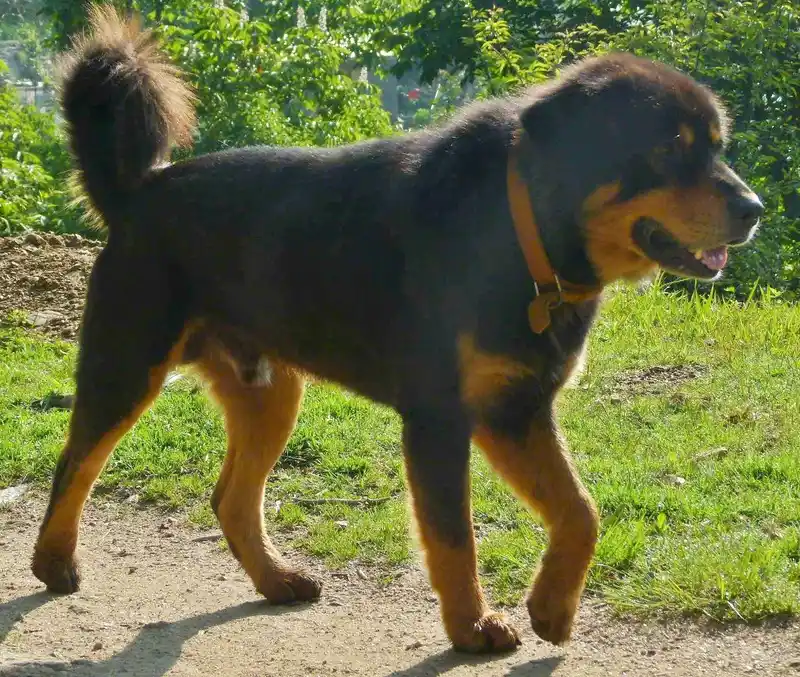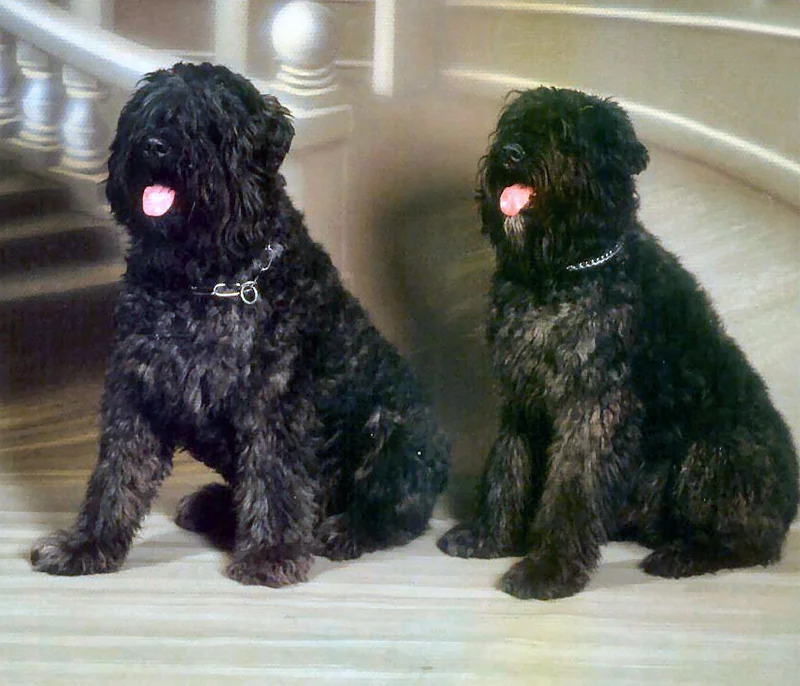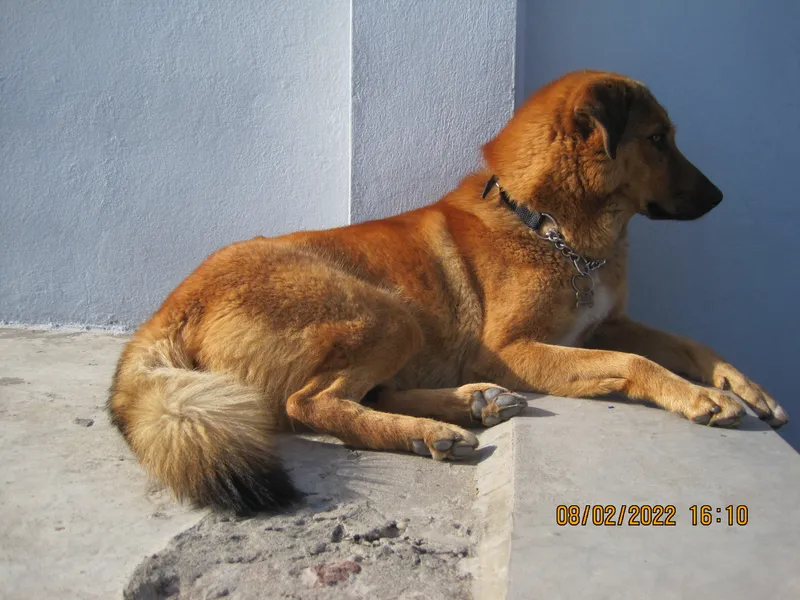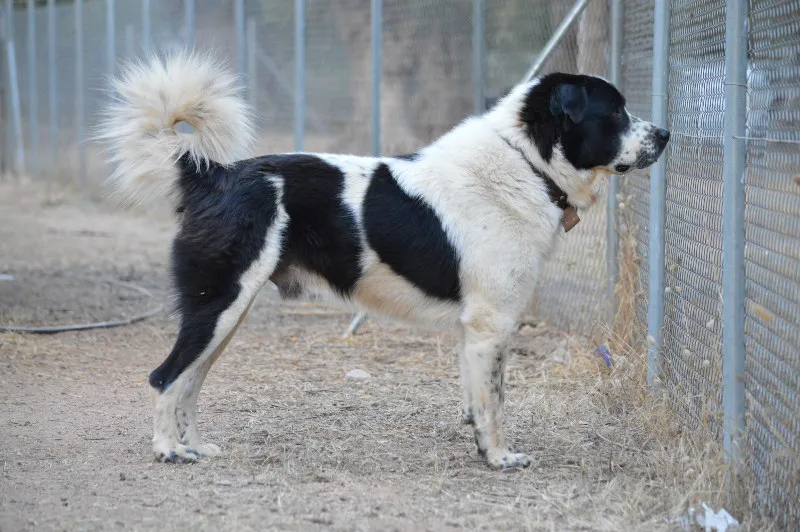Hmong Bobtail Dog
The Hmong Bobtail Dog is a loyal and intelligent breed from Southeast Asia, known for its unique bobtail and strong herding instincts. They thrive in active environments and require consistent training and socialization.
Overview
🐕Breed Overview
✨Key Traits
💡What Makes Hmong Bobtail Dog Special
One of the standout traits of the Hmong Bobtail Dog is its strong herding instinct, which makes them excel in tasks that require agility and quick thinking. Their loyalty to their families is unwavering, and they often form deep bonds with their owners.
This breed is also known for its alertness, making them excellent watchdogs. However, their independent nature can lead to stubbornness during training, requiring owners to be patient and consistent.
Their affectionate demeanor towards family members contrasts with their protective instincts towards strangers, making them a well-rounded companion for those who understand their needs.
The Hmong Bobtail Dog is a remarkable breed known for its loyalty, intelligence, and unique appearance. Originating from the mountainous regions of Southeast Asia, particularly among the Hmong people of Vietnam and Laos, this breed has a rich history as both a livestock guardian and a beloved family companion. With a robust and powerful build, the Hmong Bobtail is well-suited for outdoor living, requiring ample exercise and mental stimulation to thrive.
Their independent nature can pose challenges in training, but with consistent and positive reinforcement methods, they can become well-behaved and obedient companions. In terms of temperament, Hmong Bobtails are affectionate and protective towards their families, making them excellent watchdogs. However, they may exhibit territorial behaviors and should be socialized early to ensure they are comfortable around strangers and other pets.
Their unique bobtail is not only a distinctive feature but also a practical adaptation for their working roles in rugged terrains. Living with a Hmong Bobtail Dog means embracing an active lifestyle, as they require daily exercise and mental challenges to keep them happy and healthy. They excel in various activities, including agility training and herding exercises, which cater to their natural instincts.
With proper care, training, and socialization, the Hmong Bobtail Dog can be a loyal and loving addition to any family, embodying the spirit of companionship that the Hmong culture cherishes.
🎉Fun Facts
The Hmong Bobtail Dog is known for its unique bobtail, which is a natural trait and not a result of docking.
They have been used for centuries by the Hmong people as both herding and guarding dogs, showcasing their versatility.
This breed is highly regarded for its intelligence and ability to learn complex tasks quickly.
Breed Characteristics
Family & Friends
Good Behavior
Get Up & Go
Household Harmony
Temperament & Personality
✨Key Traits
🐕Core Temperament
The Hmong Bobtail Dog possesses a balanced temperament, combining loyalty, intelligence, and protectiveness. They are generally friendly and affectionate with their families, displaying a playful nature that makes them great companions for children.
However, they can be wary of strangers and may exhibit territorial behaviors if not properly socialized. Their independent streak can lead to challenges in training, but with consistent and positive reinforcement, they can learn to follow commands and behave appropriately.
Overall, this breed thrives in environments where they can be active and engaged, making them ideal for families who enjoy outdoor activities.
💫Personality Profile
The Hmong Bobtail Dog is characterized by its loyalty and protective nature, making it an excellent companion for families. They are affectionate with their owners and can be gentle with children, but they may exhibit territorial behaviors towards strangers.
This breed is known for its intelligence and independence, which can make training a challenge. They thrive in active environments and require consistent mental and physical stimulation to prevent boredom and behavioral issues.
Their playful demeanor and strong work ethic make them well-suited for various activities, including agility and herding.
🔊Vocal Tendencies
The Hmong Bobtail Dog has a moderate noise level, often barking to alert their owners of strangers or unusual occurrences. While they are not excessive barkers, they will vocalize when they feel it is necessary, especially if they perceive a threat to their family or territory.
Their barking can vary in intensity, from low growls to more pronounced barks, depending on the situation. Early socialization can help manage their barking tendencies, ensuring they are comfortable around new people and environments.
Affection & Social Traits
Energy & Activity
Communication Style
Care Requirements
🏃♂️Exercise Requirements
Daily Exercise
The Hmong Bobtail Dog is an active breed that requires a significant amount of daily exercise to maintain its physical and mental well-being. Ideally, they should engage in at least 60 to 90 minutes of vigorous activity each day. This can include activities such as long walks, running, hiking, or playing fetch.
Given their herding background, they also enjoy activities that stimulate their natural instincts, such as agility training or herding exercises. Puppies may require shorter sessions of play and exercise to avoid overexertion, while senior dogs may benefit from gentler activities like leisurely walks or swimming. Regular exercise not only helps manage their weight but also reduces the risk of behavioral issues stemming from pent-up energy.
Insufficient exercise can lead to obesity, destructive behavior, and increased anxiety or aggression.
Preferred Activities
🏠Living & Adaptability
Space Requirements
The Hmong Bobtail Dog thrives in environments that provide ample outdoor space for exercise and exploration. They are not well-suited for apartment living due to their high energy levels and need for physical activity.
Ideally, they should have access to a large yard or rural setting where they can roam freely. For owners in smaller spaces, it is crucial to ensure that the dog receives sufficient outdoor time and mental stimulation through interactive play and training.
Lack of adequate space can lead to frustration and behavioral issues, such as digging or excessive barking.
Climate Preference
🍲Feeding Guide
Schedule
Food Types
Portion Size
Special Nutritional Needs
Hmong Bobtail Dogs may require a diet rich in protein to support their active lifestyle. It's important to monitor their weight and adjust portions accordingly to prevent obesity, which can lead to health issues. Additionally, providing a balanced diet with essential vitamins and minerals will help maintain their overall health.
✨Grooming Requirements
Grooming Overview
The Hmong Bobtail Dog has a medium-length double coat that requires regular grooming to keep it healthy and free of mats. They shed moderately, so brushing at least once a week is recommended to remove loose hair and prevent tangles.
During shedding seasons, more frequent brushing may be necessary. Bathing should be done as needed, typically every few months or when they become particularly dirty.
Regular nail trimming and dental care are also important aspects of their grooming routine to ensure overall health and hygiene.
Care Schedule
Brush weekly; bathe as needed (every few months); trim nails every 2-4 weeks.
Health Profile
⚕️Health Care
Regular health care is vital for the Hmong Bobtail Dog's lifespan. Routine veterinary check-ups, vaccinations, and preventive treatments can help detect and address health issues early on.
Maintaining a balanced diet, providing regular exercise, and monitoring for any changes in behavior or health are essential practices for promoting longevity. Owners should also be proactive in managing any known health concerns through appropriate care and lifestyle adjustments.
Health Issues Overview
⏳Average Lifespan
Genetic Factors
Genetics play a crucial role in the lifespan of the Hmong Bobtail Dog. Like many breeds, they may inherit certain health conditions that can affect their longevity.
Responsible breeding practices that prioritize genetic diversity can help reduce the prevalence of hereditary health issues. Potential owners should seek reputable breeders who conduct health screenings and provide health clearances for the breeding stock to ensure the best chance of a healthy dog.
Living Conditions
The Hmong Bobtail Dog's lifespan can be influenced by various environmental factors. Dogs that live in active households with plenty of outdoor space tend to be healthier and live longer due to regular exercise and mental stimulation.
Conversely, dogs kept in confined spaces with limited activity may experience health issues related to obesity and boredom, which can shorten their lifespan. Additionally, exposure to harsh weather conditions without proper shelter can also impact their overall health and longevity.
🏥Common Health Issues
Hip Dysplasia
Warning Signs
🔬Diagnosis
X-rays and physical examination by a veterinarian.
💊Treatment
Surgical options or weight management, depending on severity.
📝Management Tips
Maintain a healthy weight, provide regular exercise, and consider joint supplements as recommended by a vet.
Elbow Dysplasia
Warning Signs
🔬Diagnosis
X-rays and veterinary assessment.
💊Treatment
Surgical intervention or pain management as needed.
📝Management Tips
Regular exercise and weight management to reduce stress on joints.
Patellar Luxation
Warning Signs
🔬Diagnosis
Physical examination and X-rays.
💊Treatment
Surgery or physical therapy.
📝Management Tips
Weight management and controlled exercise; surgical correction may be necessary in severe cases.
Arthritis
Warning Signs
🔬Diagnosis
Veterinary examination and X-rays.
💊Treatment
Pain management and anti-inflammatory medications.
📝Management Tips
Weight management, regular low-impact exercise, and joint supplements.
Glaucoma
Warning Signs
🔬Diagnosis
Veterinary eye examination.
💊Treatment
Medications or surgical options.
📝Management Tips
Regular eye check-ups and monitoring for symptoms.
Obesity
Warning Signs
🔬Diagnosis
Veterinary assessment of body condition score.
💊Treatment
Weight loss program and dietary adjustments.
📝Management Tips
Controlled diet and regular exercise.
🛡️Preventive Care
🔬Hip Evaluation
Hip Evaluation assesses the hip joints for dysplasia and other abnormalities, which can lead to arthritis and mobility issues.
📅 Annually after 2 years of age.
🔬Elbow Evaluation
Elbow Evaluation checks for elbow dysplasia and other joint issues that may affect mobility and comfort.
📅 Annually after 2 years of age.
🔬Patellar Luxation Screening
Patellar Luxation Screening evaluates the kneecaps for proper alignment and function, helping to prevent mobility issues.
📅 Annually after 2 years of age.
Training
🧠Intelligence & Trainability
💪Work Drive
The Hmong Bobtail Dog has a strong work drive, stemming from its historical roles as a herding and guarding dog. They thrive when given tasks to complete, whether it be herding livestock, participating in dog sports, or engaging in training exercises.
Mental stimulation is just as important as physical exercise for this breed; puzzle toys and interactive games can help satisfy their need for engagement. Without adequate mental and physical challenges, they may become bored and exhibit destructive behaviors.
Owners should aim to provide a variety of activities that cater to their natural instincts.
⚠️Training Considerations
Training the Hmong Bobtail Dog can present challenges due to their independent and sometimes stubborn nature. They may exhibit a strong will, making it essential for owners to establish clear leadership and consistency in training.
Common behavioral challenges include reluctance to follow commands, especially if they perceive the task as uninteresting. To overcome these challenges, it is crucial to use positive reinforcement techniques, such as treats and praise, to motivate them.
Engaging in interactive training sessions that incorporate play can also help maintain their interest and focus. Early socialization is vital to prevent territorial or aggressive behaviors, particularly towards unfamiliar people or animals.
📝Training Tips
To effectively train a Hmong Bobtail Dog, owners should adopt a firm yet gentle approach. Consistency is key; commands should be clear and repeated regularly to reinforce learning.
Incorporating fun activities, such as agility courses or scent work, can keep the dog engaged and mentally stimulated. Socialization with other dogs and people from a young age is crucial to develop a well-rounded temperament.
Owners should also be patient and understanding, as this breed may take longer to respond to training than others. Regular training sessions, rather than long, repetitive drills, will help keep their attention and enthusiasm high.
History & Heritage
📜Origin Story
The Hmong Bobtail Dog's origin is closely tied to the Hmong people, an ethnic group known for their rich cultural traditions and agricultural practices. As the Hmong migrated through the mountainous regions of Southeast Asia, they brought their dogs with them, using them for herding livestock and protecting their homes from predators.
The breed's unique bobtail is thought to have developed as a natural adaptation to their environment, allowing them to navigate the rugged terrain more easily. Over time, these dogs became integral to Hmong life, serving as both working animals and cherished family members, embodying the spirit of loyalty and companionship that defines the Hmong culture.
⏳Development History
The Hmong Bobtail Dog is believed to have ancient roots, with its lineage tracing back to the indigenous dogs of Southeast Asia. Over centuries, these dogs have been selectively bred by the Hmong people for their herding abilities, loyalty, and adaptability to the mountainous terrain of their homeland.
The breed's distinctive bobtail is a result of natural selection, as shorter tails are less prone to injury in rugged environments. Throughout history, the Hmong Bobtail has served not only as a working dog but also as a beloved family companion, showcasing their versatility and importance in Hmong culture.
🛡️Purpose & Historical Role
Historically, the Hmong Bobtail Dog has served multiple roles within Hmong communities. Primarily, they are livestock guardian dogs, protecting sheep and other animals from predators such as wolves and leopards.
Their keen instincts and alertness make them excellent watchdogs, ensuring the safety of their families and property. In addition to their working roles, these dogs are valued companions, often participating in family activities and cultural events.
Their loyalty and protective nature have solidified their status as beloved family members.
🏺Cultural Significance
The Hmong Bobtail Dog holds significant cultural importance among the Hmong people of Southeast Asia, particularly in Vietnam and Laos. Traditionally, these dogs have been used as livestock guardians and companions, reflecting the Hmong's deep connection to their agricultural lifestyle.
The breed is often featured in Hmong folklore and is considered a symbol of loyalty and protection. Their unique appearance and characteristics have made them a cherished part of Hmong heritage, and they are often involved in cultural festivals and events.
Conservation Status
This breed is less common but has stable populations in certain regions.









